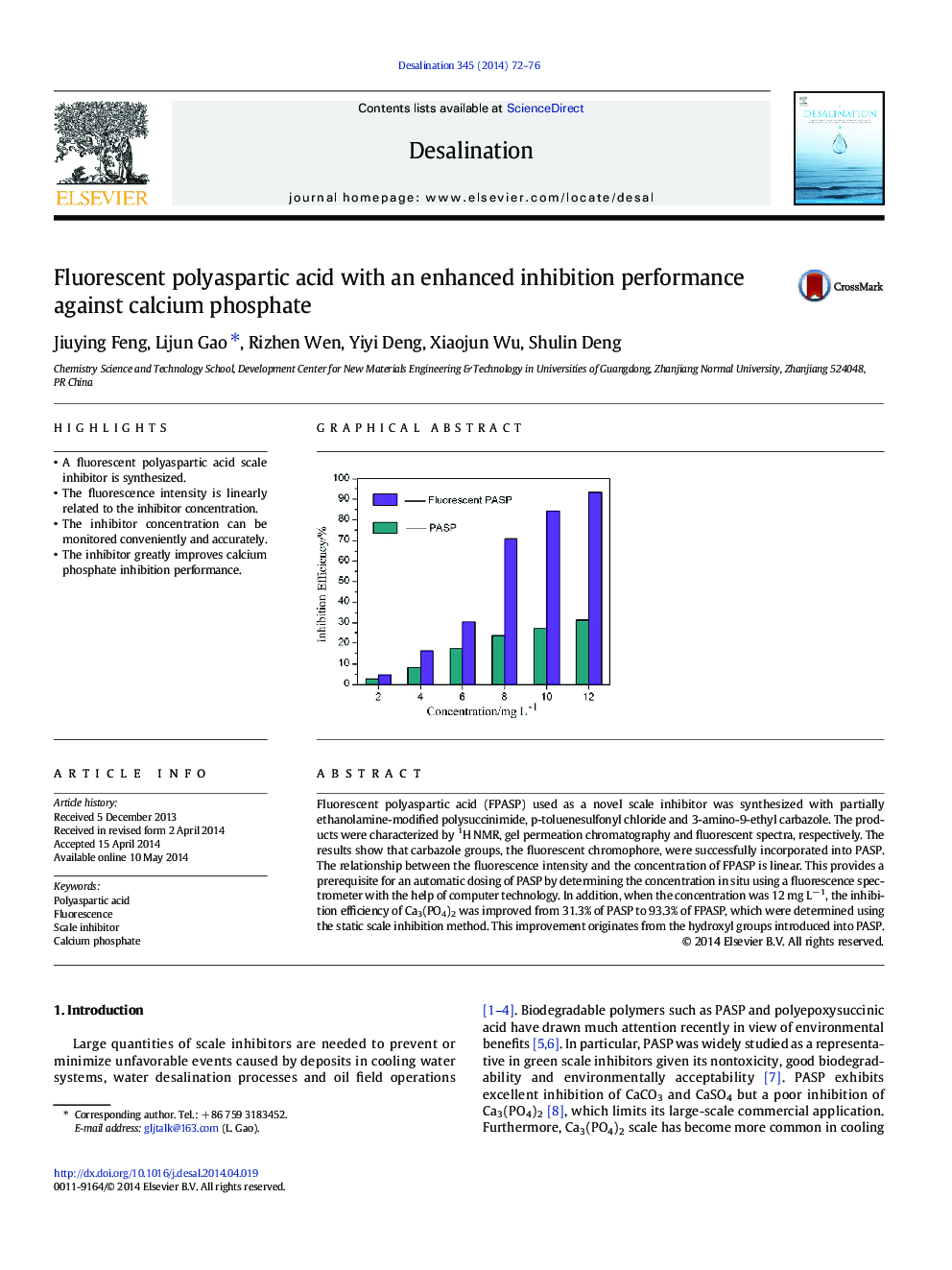| Article ID | Journal | Published Year | Pages | File Type |
|---|---|---|---|---|
| 623526 | Desalination | 2014 | 5 Pages |
•A fluorescent polyaspartic acid scale inhibitor is synthesized.•The fluorescence intensity is linearly related to the inhibitor concentration.•The inhibitor concentration can be monitored conveniently and accurately.•The inhibitor greatly improves calcium phosphate inhibition performance.
Fluorescent polyaspartic acid (FPASP) used as a novel scale inhibitor was synthesized with partially ethanolamine-modified polysuccinimide, p-toluenesulfonyl chloride and 3-amino-9-ethyl carbazole. The products were characterized by 1H NMR, gel permeation chromatography and fluorescent spectra, respectively. The results show that carbazole groups, the fluorescent chromophore, were successfully incorporated into PASP. The relationship between the fluorescence intensity and the concentration of FPASP is linear. This provides a prerequisite for an automatic dosing of PASP by determining the concentration in situ using a fluorescence spectrometer with the help of computer technology. In addition, when the concentration was 12 mg L− 1, the inhibition efficiency of Ca3(PO4)2 was improved from 31.3% of PASP to 93.3% of FPASP, which were determined using the static scale inhibition method. This improvement originates from the hydroxyl groups introduced into PASP.
Graphical abstractFigure optionsDownload full-size imageDownload as PowerPoint slide
